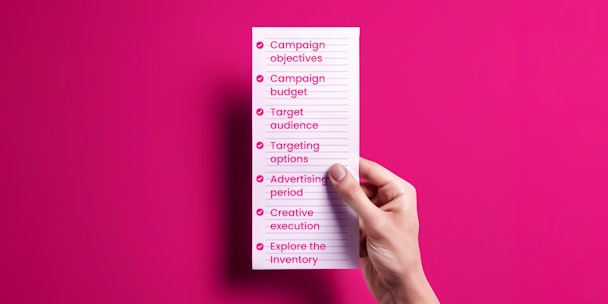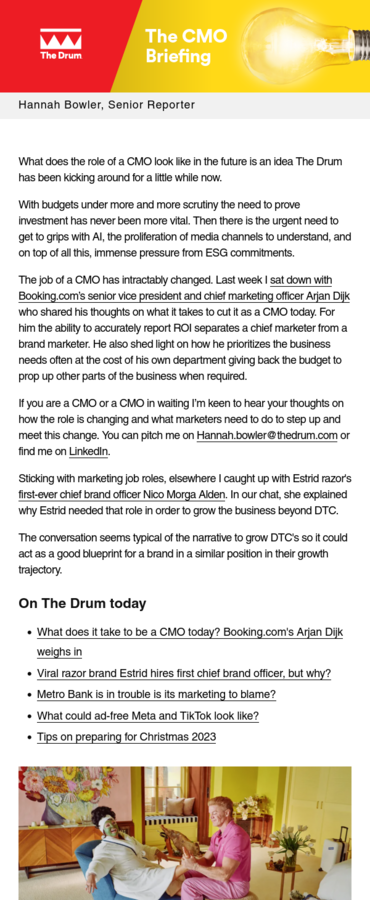The buyers guide to programmatic digital out of home (DOOH)
Programmatic digital out-of-home enables advertisers to reach their target audience with engaging content, according to Hivestack. Here, they present their go-to guide for the channel, covering campaign preparation, inventory selection, targeting, optimization, trading options, and measurement.

Programmatic digital out-of-home (prDOOH) offers an effective way for advertisers to reach their target audience with engaging and contextually relevant ad content at scale. As the out of home (OOH) channel has evolved, this technology and automation has simplified the buying and selling process of DOOH eliminating a plethora of manual requirements.
The following guide will prepare brands, agencies and omnichannel DSPs to launch programmatic DOOH campaigns with ease and efficiency. By taking all of these factors into account and regularly monitoring and optimizing your campaign, buyers can achieve the best possible results and make the most of the benefits offered by programmatic DOOH.
Advertisement
Briefing checklist
Before diving into your campaign, it’s crucial to have a comprehensive briefing checklist that outlines important details. This checklist should include:
Campaign objectives: Clearly define the objectives of the campaign, such as increasing brand awareness, targeting a specific audience, or driving foot traffic to stores.
Campaign budget: Outline the total budget allocated to the campaign and if relevant, what the split by market should look like and any CPM guidance.
Target audience: Identify the specific target audience for the campaign (e.g. demographics, interests, locations). Provide any relevant insights, or audience segmentation data that can help shape the campaign strategy.
Targeting options: Select days of week, time of day, point of interests, preferred environments, creative formats and any supporting data triggers, such as weather, traffic, events, etc.
Advertising period: Provide the duration of the campaign. It can be evergreen/always on, or a fixed time period.
Creative execution: If known, provide information about the creatives that are expected. Landscape or portrait, static or dynamic, as well ad any advertiser or category restrictions.
Advertisement
Explore the inventory
When choosing venue types, it’s worth considering the format and creative requirements of each venue type and ensuring that the message is relevant for the context and environment. It’s also possible to see the potential impressions on any given screen integrated via your chosen programmatic DOOH partner. Some of the common venue types are:
When you are buying the inventory programmatically, targeting requested venue types can be done in a granular way, such as targeting sub-categories. For example, targeting food courts in shopping centers, or the arrival halls of airports.
Suggested newsletters for you
Creative types
Global DOOH inventory is composed of many different screen sizes. While bus shelters and roadside formats are available for landscape and portrait screens, sizing can vary from environment to environment. Integrating some of these creative recommendations into your strategy will ensure your campaign can perform successfully. These include:
- Proper formatting
- Contrast and color
- The KISS method
- Typography and font size
- A clear call-to-action (CTA)
- Imagery
- Context and relevance matter
- Interactivity
Targeting
The essence of OOH has always relied on context, and now, thanks to data and technology, marketers can programmatically activate audience-based targeting in DOOH.
This audience-centric approach allows advertisers to customize their targeting strategy using pre-built, or bespoke customized segments, that can be further leveraged for retargeting across mobile or other digital channels, maximizing effectiveness of the campaign from a holistic perspective.
Budget and optimization
One of the biggest benefits of programmatic DOOH is the ability to remain flexible and optimize campaigns in-flight. This ensures buyers can achieve maximum efficiency and effectiveness every time. Regularly analyze performance metrics, adjust targeting parameters, and refine creatives to drive optimal results, like you would in any other digital channel.
The right type of trading
In programmatic DOOH advertising, there are two primary trading options to consider:
PMP (private marketplace): PMP involves an exclusive auction where publishers offer their inventory to a select group of advertisers. It requires a direct interaction between the buyer and seller to finalize deal terms. These terms are set-up in the SSP (supply side platform) and sent to buyers through their DSP (demand side platform).
Open exchange: Open exchanges are public RTB (real-time bidding) auctions open to all buyers and sellers. This option requires no direct interaction between the buyer and seller, providing a more open and automated trading environment.
Measurement
When all is said and done, accurate measurement is essential to assess the effectiveness of a programmatic DOOH campaign. Consider implementing the following measurement methodologies:
Brand lift study: Assess changes in brand perception, awareness, or intent as a result of the campaign.
Footfall lift study: Measure the impact of the campaign on driving in-store visitation and foot traffic.
Additional metrics: Depending on campaign objectives, consider additional metrics such as ad viewability, engagement rates, or conversion tracking.
Programmatic DOOH advertising provides marketers with a powerful and streamlined approach to engage consumers in the out-of-home environment, enhancing overall advertising strategies.
For more information, visit www.hivestack.com or find out more here.
Content by The Drum Network member:

Hivestack by Perion
Hivestack by Perion is the largest global, full stack, marketing technology company, powering the buy and sell side of programmatic digital out of home (DOOH) advertising....
Find out more

